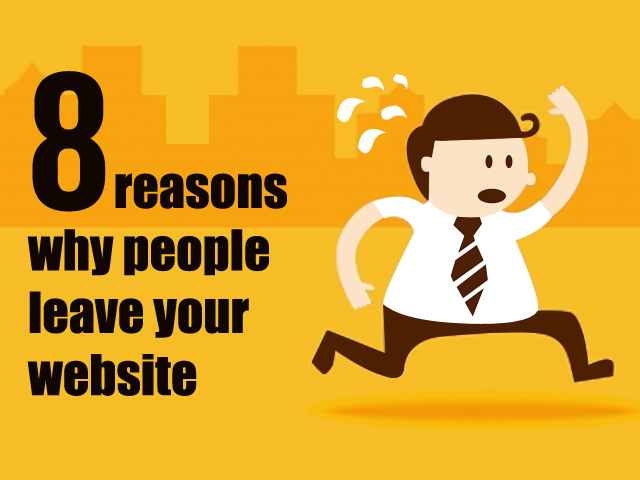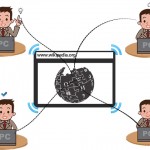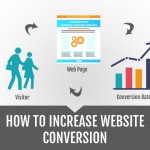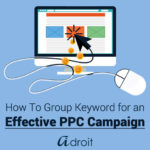 Drawing traffic and retaining them are the two fundamental responsibilities of a webmaster. An efficient internet marketer knows how to convert visitors into subscribers or qualified leads. A high bounce rate, alarmingly low visit duration are factors that indicate that things are not going the right direction. If your webpage has higher bounce rate, you need to identify the reasons that is causing the quick exit. Statistics show that on an average a visitor allows 15 seconds to a webmaster to show him what your site is worth.
Drawing traffic and retaining them are the two fundamental responsibilities of a webmaster. An efficient internet marketer knows how to convert visitors into subscribers or qualified leads. A high bounce rate, alarmingly low visit duration are factors that indicate that things are not going the right direction. If your webpage has higher bounce rate, you need to identify the reasons that is causing the quick exit. Statistics show that on an average a visitor allows 15 seconds to a webmaster to show him what your site is worth.
So your visitor’s are disappearing! What is it your audience is expecting of you and you are not able to fulfill? A lot of webmasters sweat it out on finding out ways that his competitors are doing that he isn’t. While that is something we will review, but first things first, ensure you aren’t taking any shortcuts to success, meaning no black hat techniques of search engine manipulation. Instead, focus on key factors that are causing higher bounce rate. The following are known to cause user frustration and can be followed as a guide to ensure a friendly user experience:
- Poor Navigation: A tortuous navigation is frustrating for an online visitor. Difficult landing page navigation can turn your probable customers fidgety, irate and baffling at times. Worse, they may never land on the page where the information they were looking for is stored, resulting in a lost lead. Stay away from providing unclear visual elements in your website and link text hard to decipher. Also never scatter and bury the main navigation links of your webpage.
- Loading speed issue: A high loading time is a great put off. During this age of fast internet and wifi zones, if you make your users wait for more than a couple of seconds, most would prefer to move on to the next in line. Users want fast web pages. Normally a user stays on a page for 4 seconds and approximately 40% of the visitors go away from a webpage that takes 3 second or more to load. Inspect factors that slow down the page load time like massive (and numerous) images, cheap host, fancy sliders and custom fonts. Ideally a page should take two seconds to get uploaded. Even catchy content and interesting blog posts won’t be able to save your website from getting abandoned if it takes time to load. It’s an important factor for page ranking as well. As per a recent study, every 1 second wait for your page to load causes 7% conversion loss.
- Repelling pop-up ads: It’s advisable to put off the pop-up and keep an eye if it slows down the bounce rate of your website. Pop-up’s appearing the moment a visitor lands in a webpage can be distracting, and if repeated, irritating. Pop-ups can be made visible for visitors who stay longer. This trick can help you to win over more mailing lists and advertisements for your site. You may cut down the lowest performing and too much space occupying ads from your webpage which in return will enable you to use your web space more thoughtfully and you can make more revenue as visitors stay longer with an intention to return.
- Poor content structure: It is generally considered that 50% of the customers fail to locate the stuff they are looking for in a website because of its complicated content structure. A simple, easy and convenient content structure is a significant factor in conversion and retention of website traffic. While reviewing content structure, take into account factors like language level, writing style, tone and presentation. Visitors try to crack the content from its title, and misleading content can be a major put off. Precise content, accurate details, specific information and preventing repetition are simple steps to have high quality content. As per the Nielson Norman Group, most effectual web content should be neutral and objective. An appropriate and catchy introductory piece can set the right expectations and can make a difference to your website.
- Mobile unfriendly website: 58% of the internet traffic is obtained from mobile devices. 30% of online shoppers will forsake a business deal if the shopping cart isn’t mobile friendly. If a website looks odd on handheld devices, it should be updated with responsive design wherein the software automatically alters with different resolutions. In case your webpage is quite old, you need to update the legacy code by opting for a redesign of your website. Mobile browsers surmount web browsers by a considerably higher percentage.
- Auto play: Get rid of videos that turns on automatically the moment a visitor enters your site. For many visitors, it may be irksome or distracting in an office environment or a restricted place. A forced audio/video content is seldom accepted by web visitors in a nice way. 70% of online traffic in a survey didn’t prefer auto ad as most of them voted for user initiated video play.
- Incorrect installation of Google Analytics: Be sure that the Google Analytics of your webpage is installed accurately. An improper Analytics set up can hugely influence bounce rate figure.
To avoid this kiss of death situation, try to implement effective measures to lower bounce rate of your website. Few useful sure shots like keeping your website content contemporary, having a clear design of your site, try not to mess up user experience, getting more social and have an acute call-to-action-button are the helpful tools in reducing bounce rate of your website. A webpage gets approximately 2-3 seconds to astonish a visitor. These crucial seconds are imperative to grab notice, express your message and retain them. A visitor doesn’t visit your site to abandon. They are at your landing page to find an answer of their question. If you can do so quickly you’ll be able to hold on to your consumers satisfactorily!








